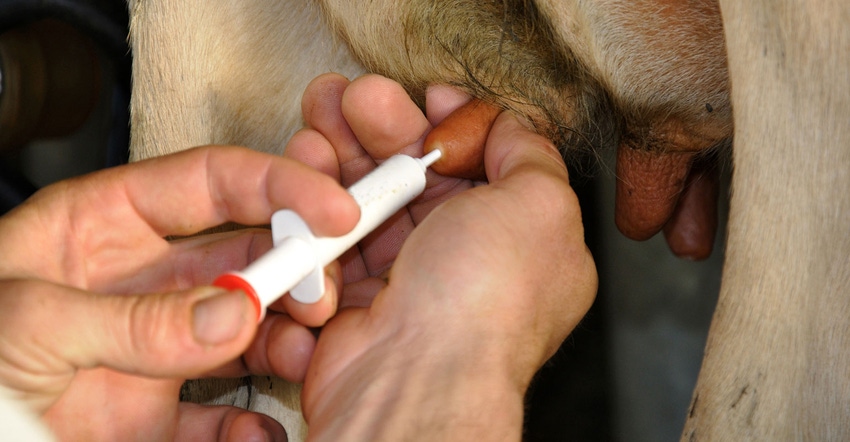June 27, 2022

When you are running low on mastitis tubes or dry cow treatment, what do you do?
If you call your veterinarian, then the rest of this article may be of little interest to you. But if you go to your local farm store to get more treatment, then you should keep reading.
Just as we saw with the implementation of the veterinary feed directive in 2017, labeling of over-the-counter livestock antibiotics — specifically antibiotic classes that are used in human medicine — is changing. By June 2023, these antibiotics will require a veterinary prescription for purchase.
It is important to understand why these changes are being made, what products are affected and how to prepare for a smooth transition.
Preserving antibiotics
Antibiotic resistance — when a pathogen is no longer affected by an antibiotic that should kill it or stop its growth — is a risk to both human and animal health. Infections caused by these pathogens are more difficult to treat and are often more likely to cause death whether they occur in an animal or a person.
Antibiotic stewardship is a collection of practices that aim to prevent antibiotic-resistant bacteria from developing and spreading. There are two key aspects of on-farm antibiotic stewardship programs: reducing the need for antibiotics and judicious use of antibiotics.
Practices that reduce the need for antibiotics are aimed at preventing disease and are likely part of your operation already. For example, vaccination protocols, proper colostrum management and good cow comfort all contribute to antibiotic stewardship through improving animal health.
The key to judicious use of antibiotics centers on using the correct medication at the right dosage and for the proper duration for the condition being treated. This is best accomplished by working with your veterinarian to develop treatment protocols that cover how to identify disease, what product to treat with and how to give that product.
What’s changing?
The upcoming label changes are, in part, being implemented to encourage you to work with your veterinarian to ensure the best antibiotics for your farm are being used and to prevent the development of antibiotic-resistant bacteria.
Although the changes to antibiotic labels will affect many products carried by local farm stores, it will not affect all livestock health products on shelves.
The label change to prescription status will only affect what are known as “medically important” antibiotics. These are antibiotics that are the same as, or closely related to, medications used to treat disease in people.
They include injectable and oral bolus products containing penicillin, tetracycline or most other antibiotics. It also affects all mastitis and dry cow treatments, but will not affect teat sealant products.
Most other products — including dewormers, fly preventatives, vaccines and coccidiostats — will not be affected by these changes. FDA’s website provides a full list of affected products.
Start preparing
If most of the antibiotics you use are over the counter, it is best to start preparing for these changes now.
As manufacturers begin to produce products with the new required labeling, which could occur before June 2023, those products will start requiring veterinary prescription for purchase. The most important step in preparing for this labeling change is to ensure you have a valid veterinary-client-patient-relationship, or VCPR, with a veterinarian.
If you already have a VCPR veterinarian, you may need to work with your vet to determine the best antibiotic products for your herd that they can write a prescription for.
If you do not have a VCPR veterinarian, establishing that relationship will be critical. This may require a special trip to your farm by the vet, or you may be able to establish a VCPR while the vet is on the farm for other reasons, depending on the veterinarian’s preferences.
Once a VCPR is established, the vet can help you determine the best products for your herd and provide appropriate prescriptions.
As these products transition to prescription, they will likely no longer be on the shelves of your local farm store. You can purchase them directly from a vet or, with a prescription, through a supplier that meets the requirements for selling prescription products.
The upcoming antibiotic label changes are an important step in demonstrating a commitment to antibiotic stewardship. For farms that do not use over-the-counter antibiotics, the effect of these changes will be negligible.
But for farms that rely on over-the-counter antibiotics, preparing for the change by developing a VCPR with a vet and knowing where to purchase the products will smooth the transition to the new labeling.
Springer is an assistant clinical professor of animal health at Penn State University.
You May Also Like




